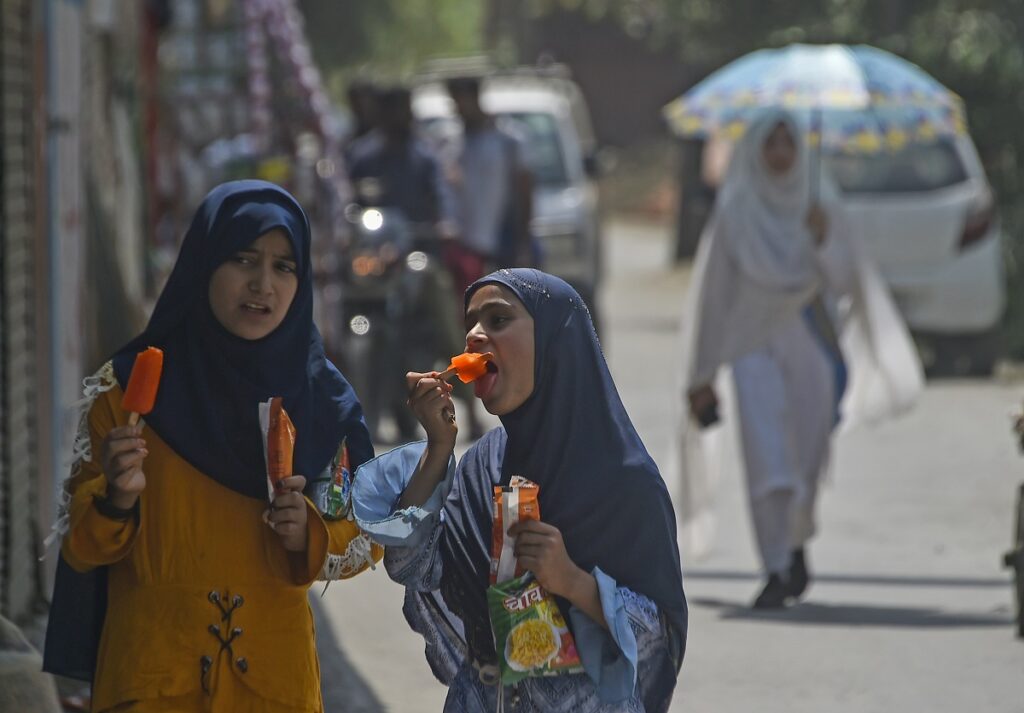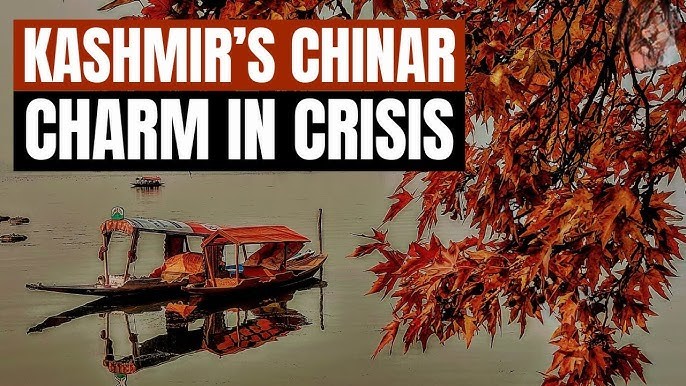Heat Wave in Kashmir: A Growing Concern
Srinagar 23 May 2025: Kashmir, often referred to as “Paradise on Earth,” is experiencing a harsh reality check. The region, known for its breathtaking landscapes and serene environment, is grappling with a growing concern: heat waves. As the temperature soars, the beauty of Kashmir is facing a new challenge that demands attention and action.
Kashmir Sees Another Day of Soaring Temperatures
The sun beats down relentlessly on the valley, casting a golden glow over the snow-capped mountains and lush green forests. However, the picturesque scenery belies the growing concern of heat waves in Kashmir. Day after day, the mercury rises, and the region struggles to cope with the unprecedented temperatures.
Heatwave: A Geographer’s Insight into Kashmir’s Rising Thermal Extremes
Kashmir’s unique geography plays a significant role in its climate. Nestled in the Himalayas, the region’s temperature is influenced by its altitude, latitude, and proximity to the western disturbance. However, with the changing climate, Kashmir is witnessing a shift in its thermal extremes. Let’s dive deeper into the geographical factors contributing to the rising temperatures.
Geography of Kashmir: Understanding the Region’s Climate
Kashmir’s geography is characterized by:
-
Himalayan Mountain Range: The region’s climate is influenced by the Himalayas, which block the cold winds from the north and create a rain shadow effect.
-
Valley Formation: The Kashmir Valley is a bowl-shaped depression surrounded by mountains, which can trap heat and contribute to temperature fluctuations.
-
Altitude and Latitude: Kashmir’s altitude and latitude play a crucial role in determining its climate. The region’s high altitude and mid-latitude position result in a temperate climate with cold winters and warm summers.
Impact of Climate Change on Kashmir’s Climate
Climate change is altering Kashmir’s climate, leading to:
-
Rising Temperatures: The region is experiencing a steady increase in temperatures, with more frequent and prolonged heat waves.
-
Changing Precipitation Patterns: Kashmir’s precipitation patterns are shifting, with more intense rainfall events and decreased snowfall.
-
Increased Frequency of Extreme Weather Events: The region is witnessing an increase in extreme weather events, such as heat waves, landslides, and flash floods.
Consequences of Heat Waves in Kashmir
The heat wave in Kashmir has far-reaching consequences for the environment, human health, and the economy.
Environmental Impact
-
Water Scarcity: The increased temperature and changing precipitation patterns lead to water scarcity, affecting agriculture, industry, and domestic use.
-
Loss of Biodiversity: The heat wave and changing climate conditions threaten the region’s biodiversity, including the iconic apple industry.
-
Soil Degradation: The increased temperature and altered precipitation patterns contribute to soil degradation, reducing fertility and affecting agricultural productivity.
Human Health Impact
-
Heat-Related Illnesses: The heat wave increases the risk of heat-related illnesses, such as heat exhaustion and heatstroke.
-
Respiratory Problems: The increased temperature and pollution levels exacerbate respiratory problems, such as asthma and chronic obstructive pulmonary disease (COPD).
-
Mental Health Concerns: The heat wave and changing climate conditions contribute to mental health concerns, such as stress, anxiety, and depression.
Economic Impact
-
Agricultural Losses: The heat wave and changing climate conditions affect agricultural productivity, leading to economic losses for farmers.
-
Tourism Impact: The heat wave and changing climate conditions impact the tourism industry, affecting the local economy.
-
Infrastructure Damage: The increased frequency of extreme weather events, such as landslides and flash floods, damages infrastructure, leading to economic losses.
Strategies to Mitigate the Impact of Heat Waves in Kashmir
To address the growing concern of heat waves in Kashmir, the following strategies can be implemented:
-
Climate-Resilient Infrastructure: Develop climate-resilient infrastructure, such as green roofs, cool pavements, and heat-resistant buildings.
-
Water Conservation: Implement water conservation measures, such as rainwater harvesting and efficient irrigation systems.
-
Climate-Smart Agriculture: Promote climate-smart agriculture practices, such as crop diversification, conservation agriculture, and agroforestry.
-
Heat Wave Early Warning Systems: Establish heat wave early warning systems to alert people about impending heat waves.
-
Public Awareness and Education: Conduct public awareness and education campaigns to inform people about the risks associated with heat waves and the measures to take to stay safe.
Bottom-Line
The heat wave in Kashmir is a growing concern that demands attention and action. By understanding the geographical factors contributing to the rising temperatures and implementing strategies to mitigate the impact, we can reduce the risks associated with heat waves. It’s time for Kashmir to take a proactive approach to addressing the challenges posed by climate change.



